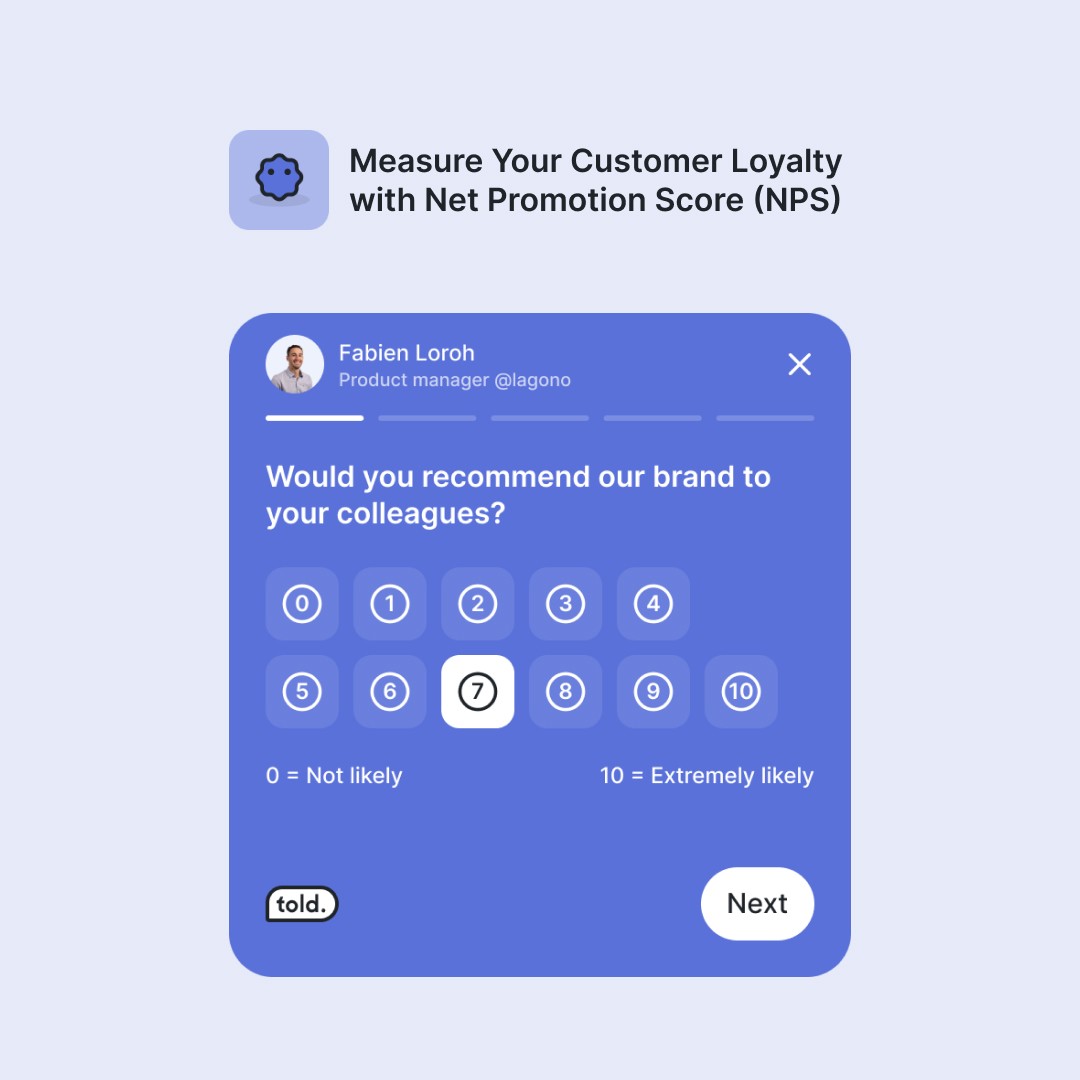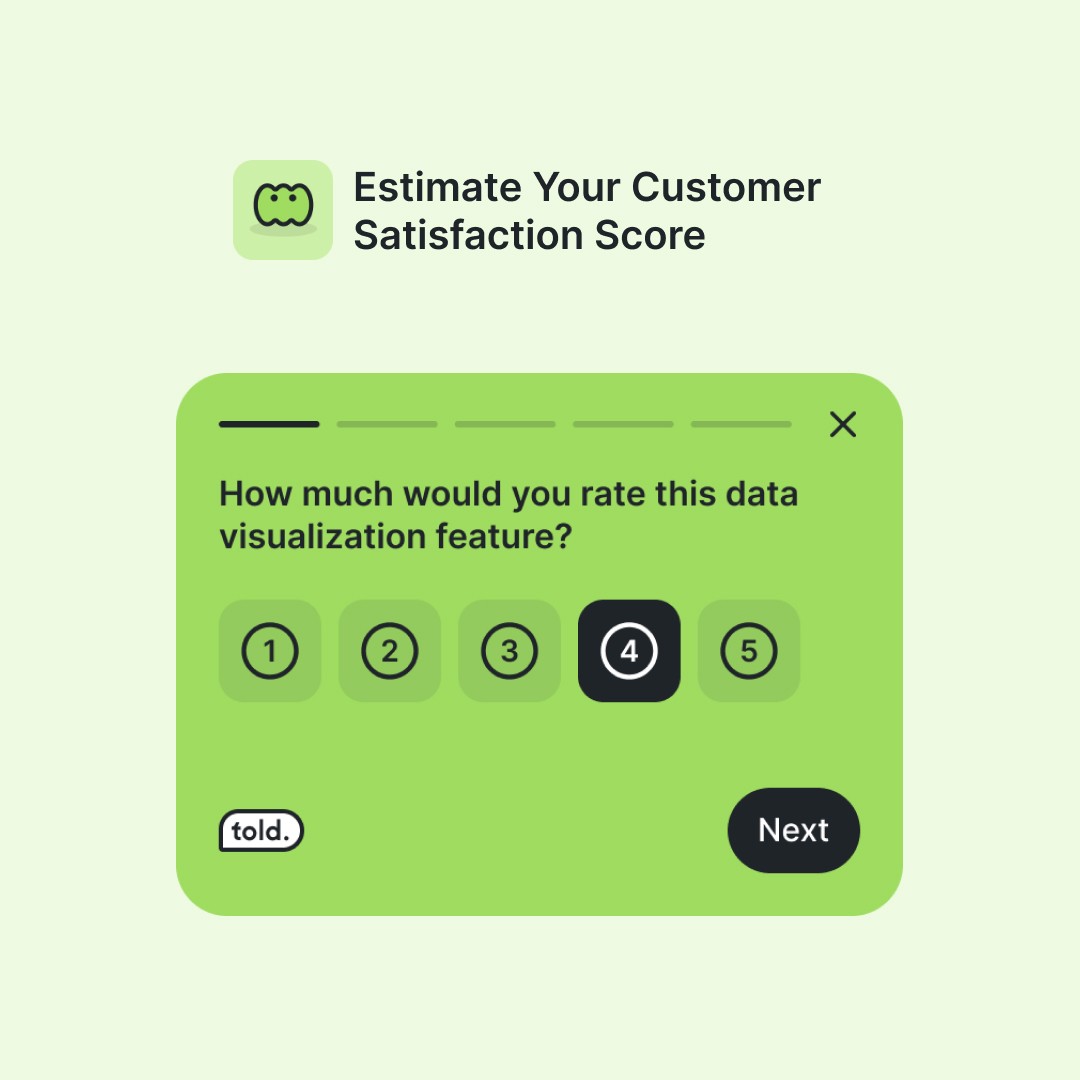Mastering Customer Satisfaction: Essential Guide for All Levels
Customer Satisfaction

Maria Correa
Feb 14, 2024
Today, we want to discuss customer satisfaction. It's an essential measure that all companies, regardless of their time in the market or size, should consider. Many traditional, long-standing companies still rely on old-school marketing because it has worked so far, but they may not be aware of the benefits of metrics like NPS or CSAT.
Whether you understand these terms or not, this guide is for you. We aim to delve into customer satisfaction for both beginners and experts, to extract maximum benefit. After all, we are a results-driven marketing team.
So, let’s start for the beginning. What is Customer Satisfaction? In simple terms, customer satisfaction measures how happy your customers are with your products or services. Think of it as a report card for your business. High scores? You're acing it! Low scores? Time for a strategy session.
Why it matters? Happy customers are the backbone of any successful business. They're more likely to return, make repeat purchases, and spread the word about your amazing service or product. In a digital world where reviews can make or break you, keeping those satisfaction levels high is non-negotiable.
Best Practices for Customer Satisfaction
Listen to Your Customers: Use surveys, feedback forms, and social media to understand their needs and expectations.
Quick Response Time: Whether it’s a complaint or a query, a rapid response can turn a potentially negative experience into a positive one.
Personalize the Experience: Adapt your services or products to meet the unique needs of your customers. A little personalization goes a long way.
Quality is Key: Ensure your product or service is top-notch. No amount of marketing can save a bad product.
After-Sale Service: The relationship doesn’t end at the sale. Follow up, offer support, and show that you value their business.
For the Advanced Teams
Now, let’s get technical. To truly excel in customer satisfaction, you need to understand and leverage two key metrics: NPS (Net Promoter Score) and CSAT (Customer Satisfaction Score).
NPS: The Loyalty Metric
Net Promoter Score is a golden gem for measuring customer loyalty. By asking one simple question – "How likely are you to recommend our product/service to a friend?" – you can measure your customers' loyalty on a scale from -100 to 100.
Promoters (score 9-10): These are your brand enthusiasts who will fuel growth by word-of-mouth.
Passives (score 7-8): Satisfied but unenthusiastic customers who are vulnerable to competitive offerings.
Detractors (score 0-6): Unhappy customers who can damage your brand through negative word-of-mouth.
Strategy: Focus on converting passives to promoters and address the concerns of detractors to reduce their numbers.

CSAT: The Satisfaction Metric
Customer Satisfaction Score measures short-term happiness with a product, service, or a specific interaction. It’s usually obtained by asking, "How satisfied were you with [specific aspect]?" Responses are measured on a scale, often from 1 (very unsatisfied) to 5 (very satisfied).
Strategy: Pinpoint areas with lower scores to improve your product or service. High CSAT scores in specific areas can guide you on what to maintain or enhance.

Integrating NPS and CSAT into Your Content Strategy
As a content creator, your goal is to design content that not only ranks well on search engines but also genuinely helps and engages your audience. Here's how:
Educate Your Audience: Create content that helps your audience understand the importance of customer feedback and how it shapes your products or services.
Showcase Success Stories: Use high NPS scores and positive CSAT feedback as testimonials. Real stories resonate and build trust.
Incorporate Keywords Strategically: Target keywords related to customer satisfaction, NPS, and CSAT. However, prioritize readability and value over keyword stuffing.
Call to Action: Encourage readers to leave feedback, highlighting its importance in improving their customer experience.
Customer Satisfaction as a whole
customer satisfaction involves a holistic journey that enclose every touchpoint between your business and your customers. This journey begins the moment a potential customer learns about your product or service and continues through purchase, usage, customer service interactions, and beyond. Let's explore each phase of this journey to uncover how you can optimize every step to enhance overall customer satisfaction.
1. Discovery and Awareness
The journey starts when a potential customer first encounters your brand. This could be through search engine results, social media, word of mouth, or advertising.
Key Strategies:
SEO and Content Marketing: Use targeted content to appear in relevant searches. High-quality, informative content establishes your brand as a trusted authority.
Social Proof: Leverage reviews, testimonials, and user-generated content to build trust and credibility.
2. Consideration and Evaluation
At this stage, customers are comparing your offerings with competitors'. They're looking for value, quality, and relevance to their needs.
Key Strategies:
Clear Value Proposition: Communicate the benefits and unique selling points of your product or service clearly.
Engagement: Interactive tools, such as chatbots or quizzes, can guide potential customers in their decision-making process.
3. Purchase
The purchasing process should be as seamless and straightforward as possible to prevent cart abandonment and foster a positive initial experience.
Key Strategies:
Simplified Checkout: Minimize steps in the checkout process and offer multiple payment options.
Transparency: Be clear about pricing, shipping costs, and delivery times.
4. Onboarding and Adoption
After purchase, guiding customers in using your product or service effectively can significantly boost satisfaction.
Key Strategies:
Welcome Communications: Send a welcome email with resources or links to guides and tutorials.
Onboarding Content: Provide easy-to-follow guides, videos, or webinars to help customers get the most out of their purchase.
5. Usage and Experience
Ensuring your product or service is user-friendly and meets customer expectations is crucial for satisfaction and retention.
Key Strategies:
Feedback Loops: Regularly collect and act on customer feedback to improve the user experience by using NPS or CSAT.
Support Resources: Offer comprehensive FAQs, knowledge bases, and how-to guides for self-service support.
6. Customer Service and Support
Excellent customer service can turn a potentially negative experience into a positive one, reinforcing customer loyalty.
Key Strategies:
Accessibility: Ensure support is easily accessible through various channels (email, phone, live chat).
Empathy and Efficiency: Train your customer service team to handle inquiries and issues with empathy, clarity, and efficiency.
7. Retention and Loyalty
The journey doesn’t end with the sale. Encouraging repeat business and loyalty is key to long-term success.
Key Strategies:
Loyalty Programs: Reward repeat customers with discounts, exclusive content, or early access to new products.
Regular Check-ins: Use email marketing to stay in touch with customers, offering them relevant content and updates.
8. Advocacy
Satisfied customers can become your brand's most powerful advocates, recommending your products or services to others.
Key Strategies:
Encourage Reviews: Ask happy customers to leave reviews or share their experiences on social media.
Referral Programs: Implement referral programs that reward customers for bringing in new business.
Conclusion
Whether you’re just starting out or you're an expert in customer satisfaction metrics, remember, the goal is to keep improving. Customer satisfaction as a whole experience requires a meticulous approach to every interaction a customer has with your brand. By focusing on optimizing each phase of the customer journey, from discovery through advocacy, businesses can create a seamless, enjoyable experience that not only meets but exceeds customer expectations. Remember, the key to improve customer satisfaction lies in understanding and addressing the needs and preferences of your customers at every step of their journey.

























